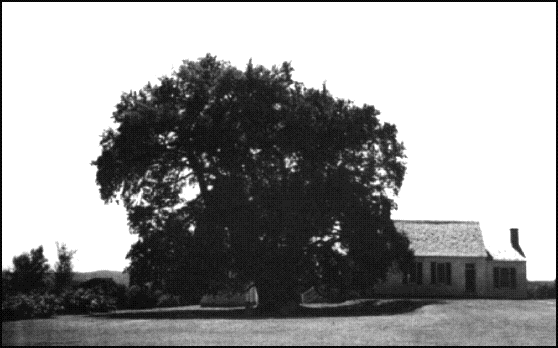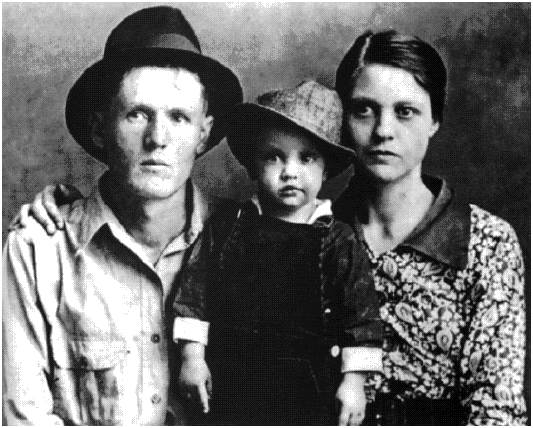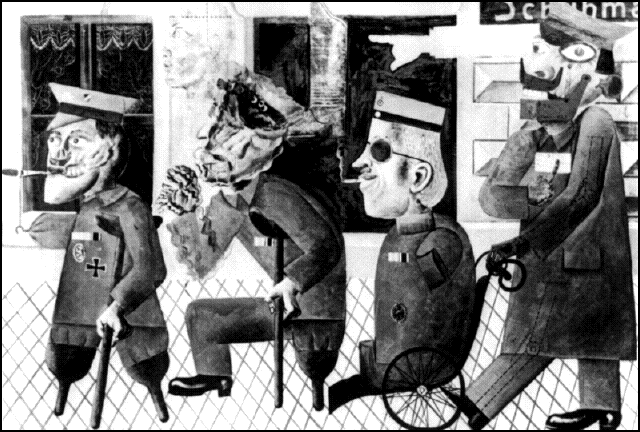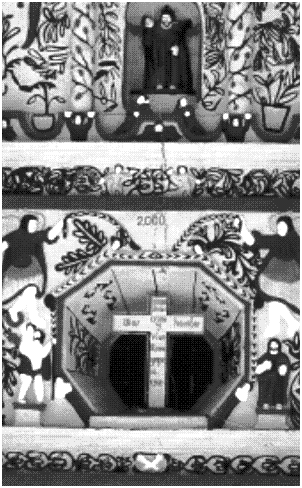
My theory of trees is you plant them and if they don't up and die, then you have a friend for life. My batting average runs about 20-80 --- eg, one out of five that I stick in the ground manages to survive.I also have this thing about cutting them down, no matter how obnoxious and pushy they become. There's a ficus I planted in my back yard some time ago but in the last few years that son-of-a-bitch has developed huge hairy tap-roots, even though it's a scrawny little runt. If it smells water or sewage within a hundred yards, the mother starts making its way underground stealthily, and soon enough it's hugging your pipes with its hairy arms so that one day you flush the toilet and all comes back like a bad dream.
So I call in Henry the Plumber and he says "The camphor tree again?" and I say "Yes," and he comes out in his 1978 black Suburban packed with wrenches and pipes and anvils and things and he gets down the pick and shovel and digs a trench that would be a credit to the Somme and starts unthreading those King Kong root-hairs from the pipes. He covers it all up again which works fine for a year or so until the toilet starts talking back to us again.
Jeffrey G. Meyer, author of America's Famous and Historic Trees likes trees too, but he does something about it, rather than just bitching at his plumber. He takes his time, wandering around to discover the history of America's older and more gnarly specimens, then he snaps pictures (seventeen here in color) and tells you and me why they are important and how we can plant one just like it or, if we are hungry, how we can use it for our next meal.
Husk black walnuts off your walnut tree, he says, then roast them in the oven for fifteen minutes to make the shells easier to crack. (Put on your gloves to do it; they are black.) Cook them up with wild rice, butter, mushrooms, onion, green pepper and garlic. And while you are about it, put a fence around your walnut tree and hire a Doberman to protect it, because "sawlogs" of black walnut go for $5,000 each and there are people out there who actually go out and kidnap trees while no one is looking.
Meyer, who hales from Jacksonville, has something to say about many historic and lofty trees, including Patrick Henry's Osage Orange (1791), Frederick Douglass' White Oak (1877), Amelia Earhart's Sugar Maple (1897), and Elvis Presley's Pin Oak (1967). [See Presley, Fig. 2 below].
When Meyer went to Graceland, he looked for different things than the rest of us. I'd be checking out the Jungle Room, the Monkey Chair, the Hall of Gold, and Hound Dog II, but Meyer is eyeballing the magnolia, elm, beech and oak along the driveway --- most of all, the Pin Oak (also known as water oak, or Spanish oak).
It is said that as the Presley funeral party passed the tree, one of its branches broke, and fell thrashing, weeping to the ground. (I just stuck in that weeping business.) Meyer explains that it is highly unusual for this to happen because:
it's a poor self-pruner; the lower branches don't fall off when they die but slowly droop until they wrap around the tree, forming somewhat of a net protecting the trunk below. So the little surprise the pin oak dropped on Elvis' funeral was decided uncharacteristic of this species, and certainly a bit of natural punctuation to the event.
If you want a bit of Graceland in your own backyard, Meyer tells you how exactly how to do it, which includes gathering the pin oak acorns, drying them, moistening them from time to time, and then planting them in potting soil.
There are seventeen tall stories not unlike this one in America's Famous and Historic Trees, with some bodacious and worthy ancient trees pictured --- such as the Treaty Live Oak in Jacksonville. That was where the Timucuan Indians sat to do their treaties, which didn't help much, since all the Indians were able to salvage from their agreements with the whites were the loss of all their land (and trees) and ultimate extinction. The Treaty Oak itself is a beauty: its limbs extended out, resting on the ground, as if it were all tuckered out, weary and sad, from all those broken treaties.
Jacksonville was named for President Andrew Jackson, but before that , it had been called "Cow Ford." It lies at a narrow juncture on the St. John's River, and you could take your Holsteins across at that point and not drown their fool heads in the dark waters of the only northward-flowing river in the United States.
I once wrote the local newspaper, the Florida Times-Union, and pointed out that since Andrew Jackson was such a disreputable boozer, as well as a representative of the new republic who murdered Timucuans and other Indians willy-nilly ... that we would be doing a service to the image of Florida and the nation (not to say Native American history) if we could somehow get the city's name changed back to Cow Ford. Which, when you think about it, isn't such a bad name for a place where the bovines lumbered across the waters so peacefully.
The Florida Times Union, a notoriously stuffy rag, never even replied to my very funny suggestion.

--- L. W. MilamGo visit Graceland
if you must
Guatemala
Connor Gorry
(Lonely Planet)Some would call it a guidebook --- but, better, think of it as a pocket-sized encyclopædia of facts, along with suggested deportment, rundown on currency, and notable places to visit. Facts include "Arts," "Language," "Mayan Calendar System," "Geology," "Climate," and "History." This last section alone is enough to break your heart, from the earthquakes and early brutalizations by the Spaniard conquistadores under el bruto Pedro de Alvarado --- sent specially by Hernán Cortés to drive the Mayan mad --- to the heavies from the CIA who fifty years ago figured that terror and mayhem were probably the best ways to make the world safe for the United Fruit Company.There are maps galore, including one of the distribution languages in Guatemala --- Achi, Mopán, Itzá, Mam (also common in the Southern United States --- as in "Yes, ma'am,") and the one that later got transmogrified into the world-renowned Oriental figurine by the name of Poqomam.
The writing in Guatemala volume is crisp and opinionated --- as all good guide-book writing must be opinionated. For example, these are four of the suggested "Highlights" of Guatemala City:
- Getting a dose of youth counterculture at one of the clubs or bars
- Checking out the Torre el Reformador, the world's only accurate scale replica of the Eiffel Tower
- Shopping in the Central Market
- Leaving
The chapter on diseases might scare the poopie out of you. In that country you can find Amœbic dysentery, Hepatitis (A, B, C, and D), Malaria, Dengue (also called "Breakbone Fever," because that's what it feels like when you get it), Typhoid, Schistosomiasis, Cholera, Filariasis, and Scabies ("The Seven-Year Itch"). I had the latter for a year after returning to the U. S. I knew something was wrong, since I sat up all night scratching, but several skin doctors could find nothing. I finally treated it myself with Scabisan, which did the trick, but afterwards I missed the skin's wonderful/dreadful roiling wave of heat-blast and tingling which overtook me whenever I got into a hot shower. Try it some time.
If you are seeking other things to scare your patooties, look at the chapter on mordida --- the well-know bribe, often demanded at the border when entering or leaving the country:
Some travelers have had success completely ignoring officials' fee requests by just drifting away in a self-absorbed fog. If it's a legitimate fee, you'll be stopped, if not, you'll walk away without paying a cent. Still others have offered to pay the fee in an odd currency, Japanese yen or Norwegian krone for example, and have been waved off by baffled officials who were not familiar with the funny money.
Lest I make it sound like it's all fear and trembling, the listings for specific cities and towns make a visit to Guatemala sound more than inviting. For example, Chichicastenango, can "seem magical," where "narrow cobbled streets and red-tiled roofs are enveloped in mist, as they often are. Chichi is a beautiful, interesting place, with lots of shamanistic and ceremonial overtones..."
There is a precise map of the streets, highlighting thirteen places to stay, fifteen places to eat, nineteen places to visit (including ATMs). All hotels and restaurants (but not ATMs) are rated for quality and price. There is a sidebar on the religious life of the "cofradías" --- brotherhoods which require that their leaders entertain and provide banquets for other members, but probably not you.
All museums and shrines and markets are described exhaustively; information is given on how to get from Chichi to seven other cities by bus. What more can you ask for --- except to be there?
The language section gives useful phrases in Spanish, Modern Mayan, and Mam. To count in Mam, class --- repeat after me: jun, keb', oxib', kijeb', job', waq'ib', wuqub', wajxakib', b'elejeb', lajuj. See? It's as simple as keb' + keb = kijeb'.
--- Carlos Amantea
War and
Our World
John Keegan
(Vintage)John Keegan lectures at the Royal Military Academy in England, and is an expert in military history. War and Our World is a meditation (if I can use that phrase) on the nature of war, how it has changed over the centuries, and what it has meant in the way of honor, and the consolidation of states, as well as destruction and pain. He tells of what he believes to be the earliest military system, in Mesopotamia (3000 BC,) and in Assyria in (1300 BC).
Chivalry began, he believes, with Christianity, which demanded decent treatment of all prisoners, avoiding atrocities against civilian populations, strictures against rape, looting, and the extending of medical care to the enemy wounded. In the 19th Century,
European armies enforced elaborate codes of correct behaviour, which were accepted as a matter of course by the rank and file.
Looking at the present, Keegan claims that war between large nations is no longer possible, since nuclear capabilities have made it improbable that China, the United States, Russia, and the European Community will be fighting one another. It is now, rather, a matter of very poor countries involved in civil wars, and wars against their neighbors. These countries continue to battle not with high-powered technology but with cheap arms:
The mass-produced assault rifle, costing one-millionth of a jet fighter's price, is...an almost universal scourge. Many of the fifty million dead of the wars of this century's second half have been killed by the cheap assault rifle. Its high rate of fire makes it deadly against the many in the hands of an individual, while its lightness and simplicity allow even untrained children --- who figure increasingly frequently in the ranks of unofficial armies --- to kill with a profligacy the veteran of the past could not achieve.
War and Our World was originally commissioned as a series of the Reith Lectures by the BBC. Some of the facts given are interesting: that the most brutal war in terms of percentage loss of adult males occurred in Paraguay --- the War of the Triple Alliance --- between 1864 and 1870; that for the Greeks, the idea of war was less than a day in battle: "An hour of killing in which one side or the other was broken, the losers fled home and the victors buried the dead." Verdun, on the other hand, went on from February to November, 1916, which
undermined the individual's essential belief in the statistical probability of his own survival...At the same time, the experience of the individual as long as he survived was nastier than ever before --- measured in terms of noise, general insecurity and the spectacle of the wounds inflicted by modern weapons.
He concludes, "War had got longer. It had also got worse."
§ § § Considering the august history and scholarship of the Reith lectures, Keegan's book is a puzzle. It is jam-packed with false assumptions, false conclusions, and astounding misstatements of facts. That business about the Christians introducing chivalry would and does make no sense whatever to the citizens of the Middle East. Muslim histories still relate tales of brutal Crusades, take-
no- prisoner pogroms fought in the name of the Prince of Peace. There are also some historical boo-boos. Keegan claims that the first wars on record were in Mesopotamia, but the highly regarded Encylopædia of Military History lists Menes of Egypt with his provincial militia beginning possibly as early as 3400 BC. Even more out-
of- whack are Keegan's basic assumptions which one might characterize as neo-colonialist. After stating unequivocally that "no one in Britain today...fears death by starvation," he goes on to tell us that it is safe to predict
that a relatively small proportion of the people of the world will die for lack of food in what remains of this century.
Tell that to the people of Africa --- Sierra Leone, Guinea Bisseau, Guinea, Angola and Uganda --- where, according to WHO, lack of proper diet leads to weakened immune systems in children resulting in catastrophic diseases --- such as cholera, diarrhea, and dysentery. In the year 1999, these claimed 5,000,000 lives.
Another doubtful claim is that the great powers no longer make arbitrary wars:
States are subordinate to a power greater than themselves. They cannot make war at wish, certainly cannot claim state interest or political necessity to make war as they choose...
We wonder if Keegan has had the chance to look into the recent history of Afghanistan, Nicaragua and Guatemala, destabilizing wars brought to you courtesy of America's bounteous assist to imported and indigeneous terrorists (which, by-the-bye, has helped to make the Taliban the powerful force for international terrorism that it is today).
England's only "unilateral war, he reports, occurred in the Falklands, and it was "both legal and victorious." Right --- unless you happen to live in Buenos Aires.
There may have been conflicts following withdrawal from empire, but we managed the transition without provoking any war on a scale comparable to that fought by France in Algeria or Portugal in Africa.
When I came out with a whopper like this, my mother would wash out my mouth with that awful tasting lye soap. If she were still alive, I would certainly direct her attention to Mr. Keegan's choppers. Presumably, after the clean-up, she would cite page 1287 of the Encyclopædia:
India and Pakistan both received their independence simultaneously, and both became dominions within the British Commonwealth of Nations. Rioting, violence, and death increased throughout both nations, and particularly in Punjab. Mobs of religious majorities in both nations began to terrorize, rob, and murder the minority groups, most of whom took refuge beyond the partition frontier. After about 6 weeks of slaughter, relative peace returned, mostly because the persecuted minorities had been wiped out or chased away. No reliable statistics exist, but it is probable that close to a million people were massacred, while 10-15 million people were forced to flee from their homes.[Our emphasis.]
1947, August 14. Independence of India and Pakistan.

